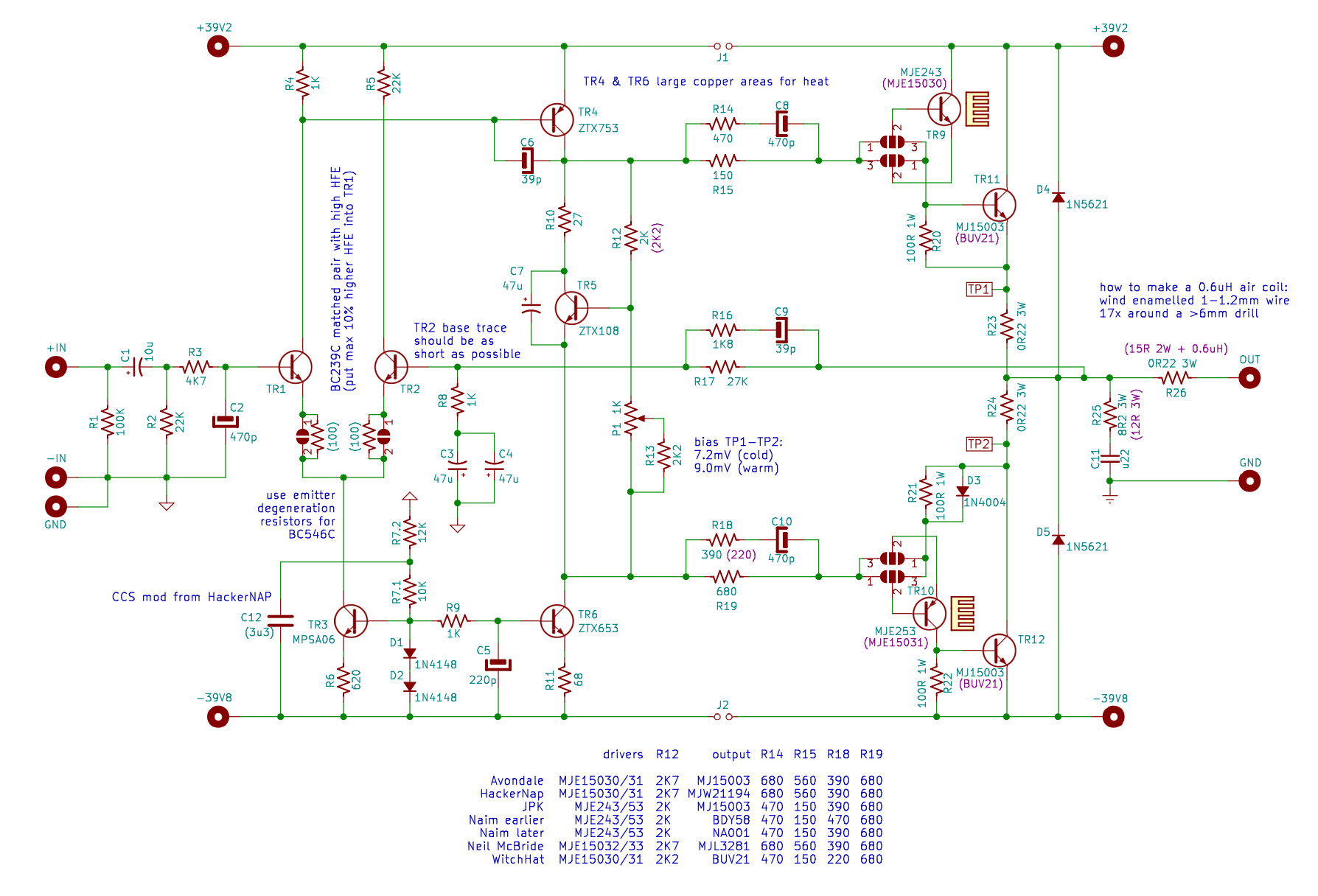Hi,
with great help of forum members I managed to finally got my 2 power amps up running and wanted to share some pictures. I got original Naim boards for free from @stackowax and made an amp with them, using H+F transformers I found in the bay. My clone amp uses transformers by Toroidy and is based on the work by Jeff Young who also gave me a lot of advice here and on diyaudio. Rectifier and grounding schemes I did as discussed in the linked threads. With the help of @john.luckins and @timH I was able to make high voltage versions of the ALWSR regulator for the front end of my clone amp, see here. This is a picture of the amp with the original boards:
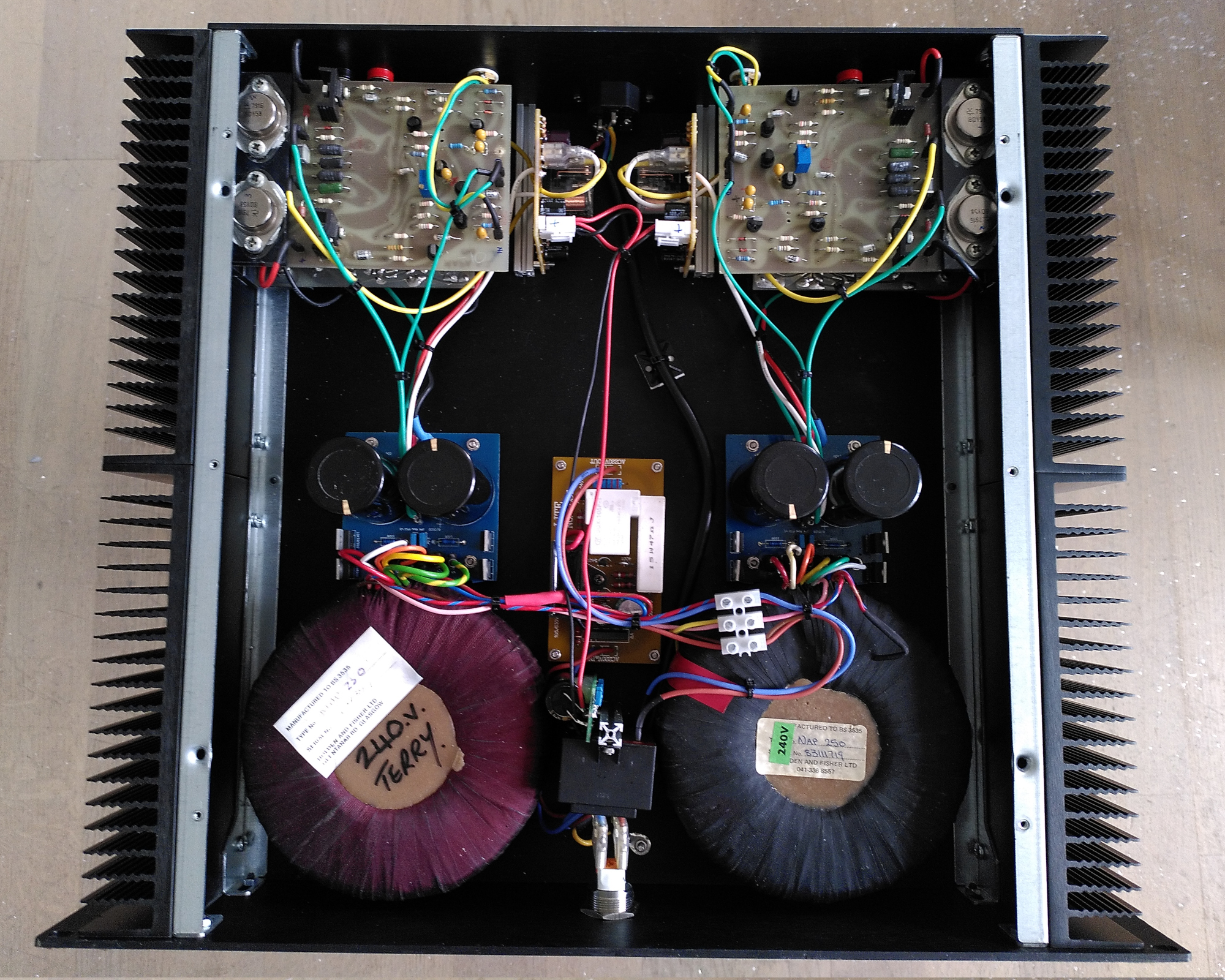
There are soft power on and speaker protection boards, the main caps are Mundorf, and it sounds great: round, punchy, natural, deep, transparent.

This is the clone: the third transformer in the middle has separate windings for each channel, so again 2 mono amps in one case. BTW both cases are Modushop 2U, and both amps have an extra small transformer to power the protection and soft power circuits. It sounds cleaner, more open, less cloudy, more natural, more transparent than the vintage amp, but also a bit flatter and more tiring - but I expect this to improve over time, it's running in for it's first day only (the vintage amp runs for weeks already).
This is the psu schematic I used:
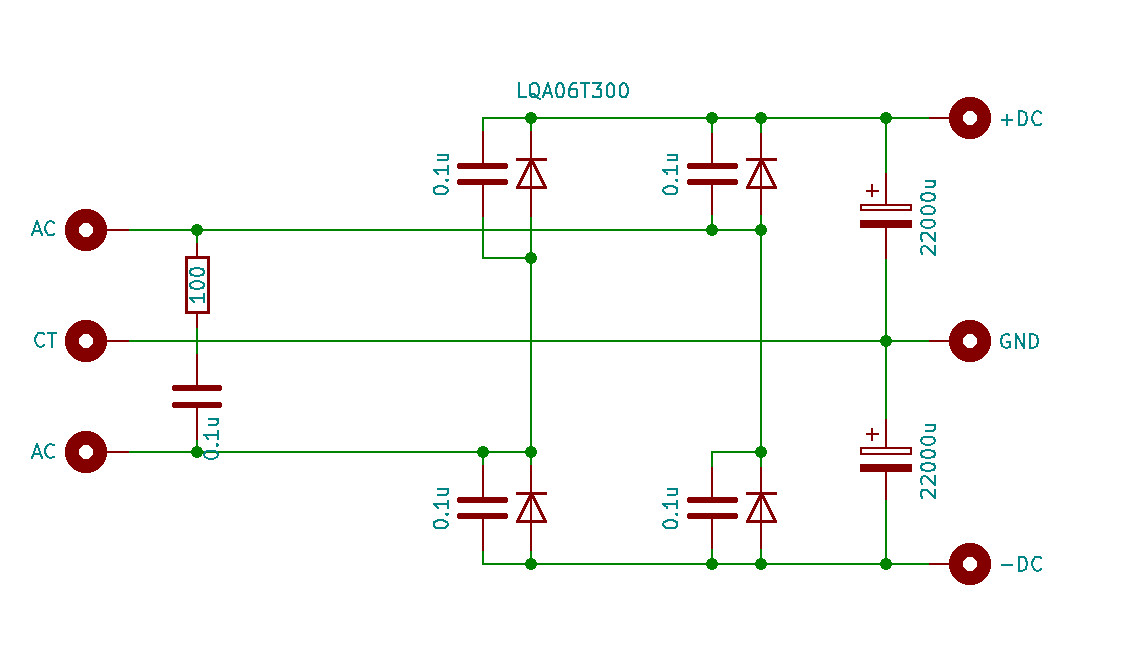
For the power stage I used 4x 10.000uF Kemet slit foil caps, for the front end 2x Mundorf 22.000uF per channel. The Mundorfs sound so much better on the front end than all other caps I tried including a CRC version. Both amps have BDY58s, I got mine brand new from Halfin who still had them in stock. This is how the grounding is wired:
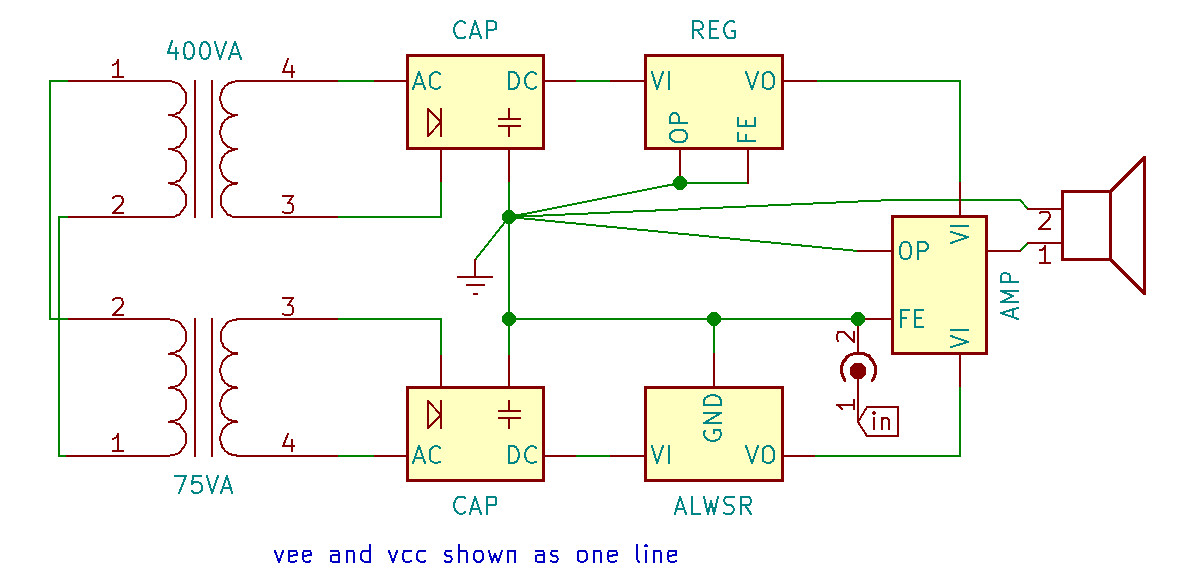
The amp board:
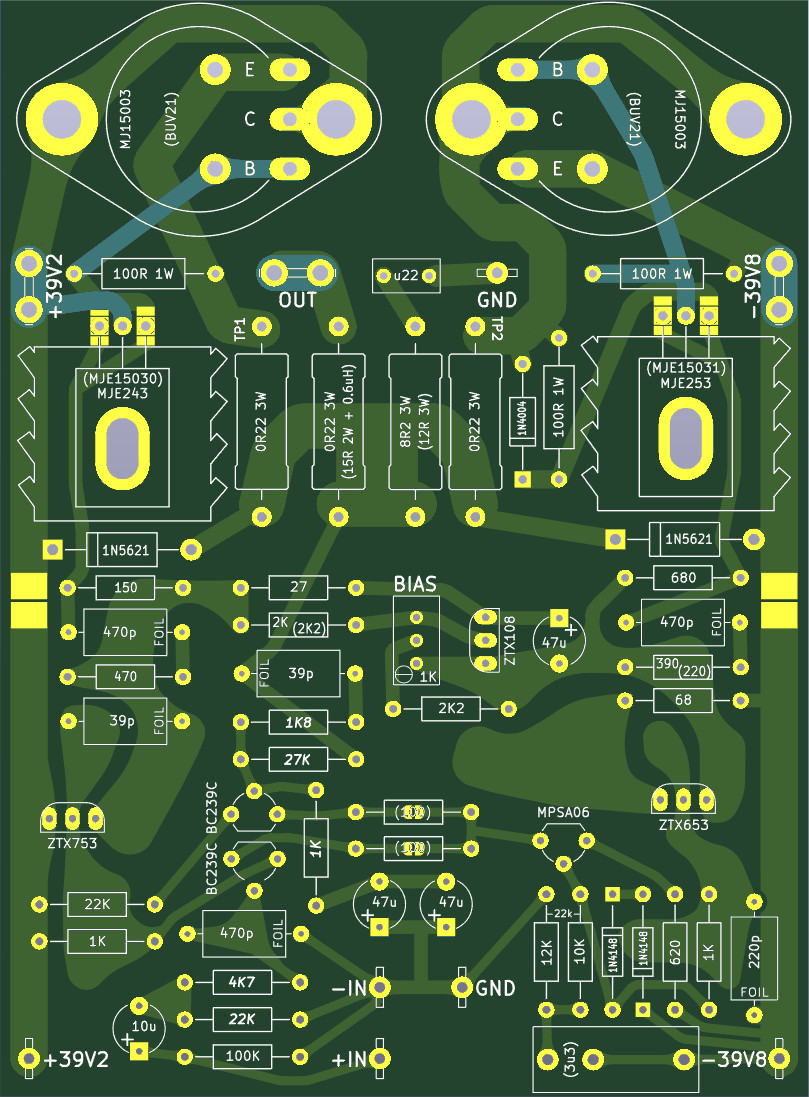
Is the grounding layout good around the input? The next picture shows the regulator board - as you can see I tried to make a star earthing layout, is that a stupid idea...?
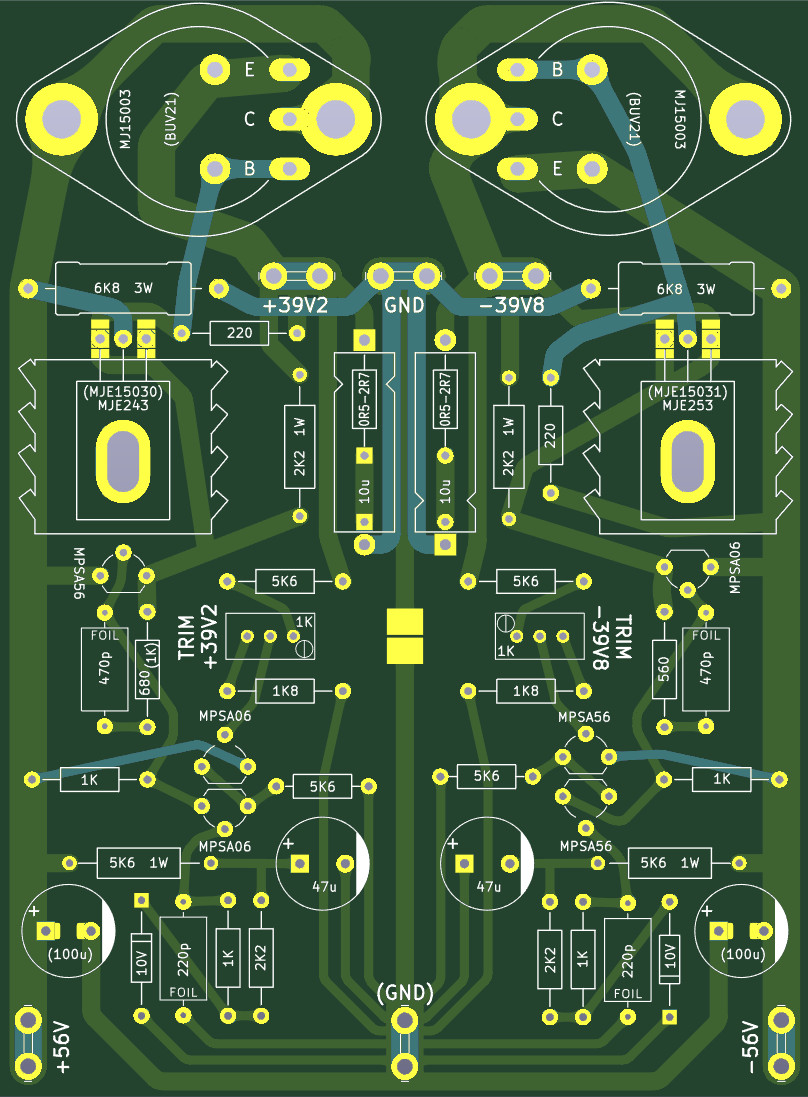
The high voltage ALWSR:
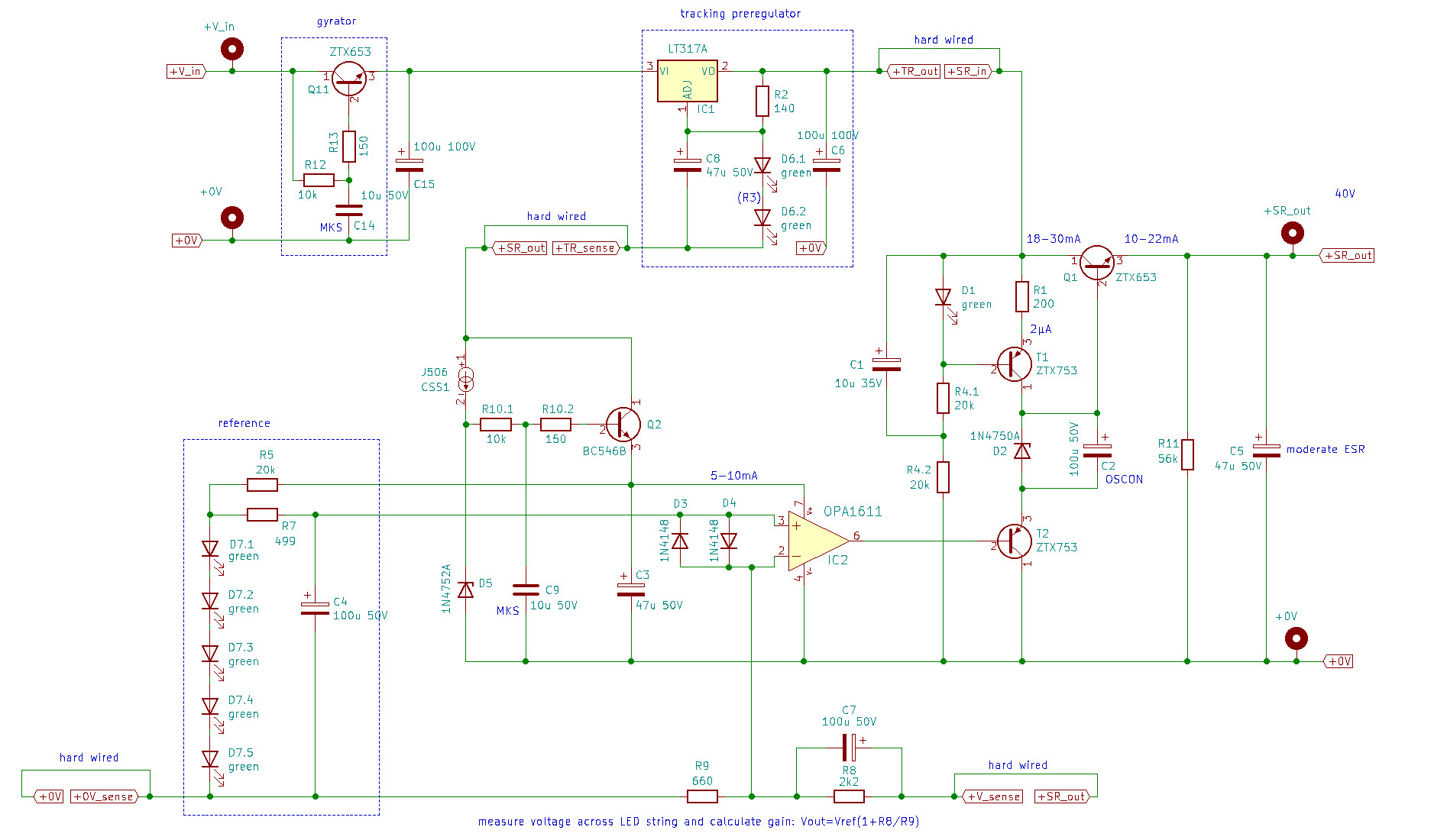
The negative version:
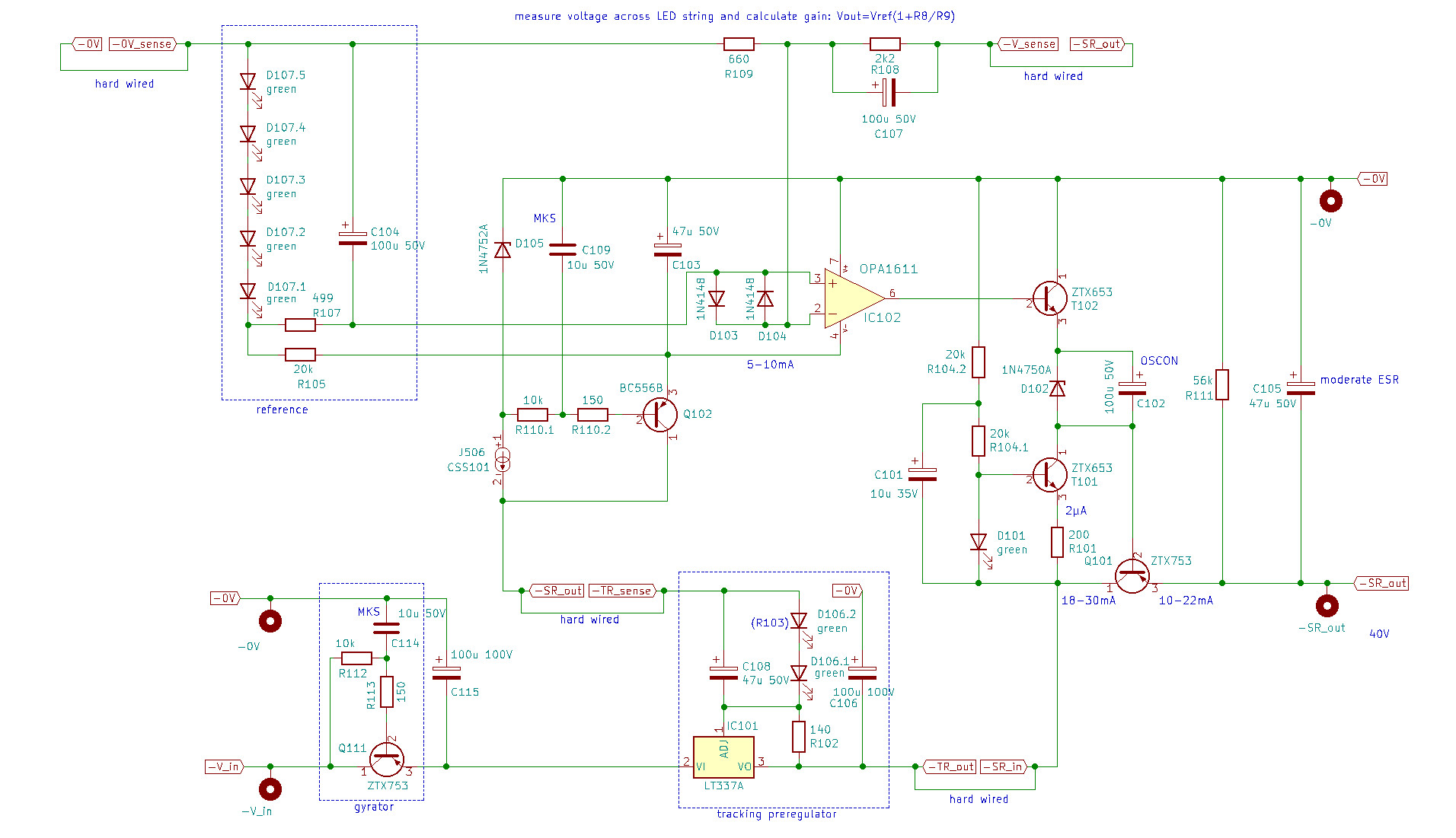
I am very happy about finishing the project, it was more work than expected... The cases are closed versions and needed modifications because the heat sinks were too long - I had to face them off a couple of millimeters which was not so easy, I finally did that on my lathe with a 50mm face mill.
I am happy with the sound, but would be glad to hear suggestions on how to improve from here. Many thanks all you guys for the help, and this is really a great forum that made it possible for me!
with great help of forum members I managed to finally got my 2 power amps up running and wanted to share some pictures. I got original Naim boards for free from @stackowax and made an amp with them, using H+F transformers I found in the bay. My clone amp uses transformers by Toroidy and is based on the work by Jeff Young who also gave me a lot of advice here and on diyaudio. Rectifier and grounding schemes I did as discussed in the linked threads. With the help of @john.luckins and @timH I was able to make high voltage versions of the ALWSR regulator for the front end of my clone amp, see here. This is a picture of the amp with the original boards:

There are soft power on and speaker protection boards, the main caps are Mundorf, and it sounds great: round, punchy, natural, deep, transparent.

This is the clone: the third transformer in the middle has separate windings for each channel, so again 2 mono amps in one case. BTW both cases are Modushop 2U, and both amps have an extra small transformer to power the protection and soft power circuits. It sounds cleaner, more open, less cloudy, more natural, more transparent than the vintage amp, but also a bit flatter and more tiring - but I expect this to improve over time, it's running in for it's first day only (the vintage amp runs for weeks already).
This is the psu schematic I used:

For the power stage I used 4x 10.000uF Kemet slit foil caps, for the front end 2x Mundorf 22.000uF per channel. The Mundorfs sound so much better on the front end than all other caps I tried including a CRC version. Both amps have BDY58s, I got mine brand new from Halfin who still had them in stock. This is how the grounding is wired:

The amp board:

Is the grounding layout good around the input? The next picture shows the regulator board - as you can see I tried to make a star earthing layout, is that a stupid idea...?

The high voltage ALWSR:

The negative version:

I am very happy about finishing the project, it was more work than expected... The cases are closed versions and needed modifications because the heat sinks were too long - I had to face them off a couple of millimeters which was not so easy, I finally did that on my lathe with a 50mm face mill.
I am happy with the sound, but would be glad to hear suggestions on how to improve from here. Many thanks all you guys for the help, and this is really a great forum that made it possible for me!


